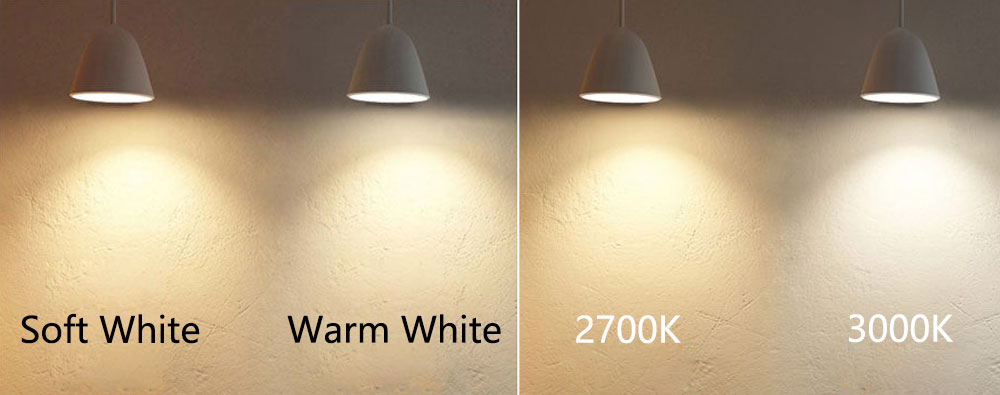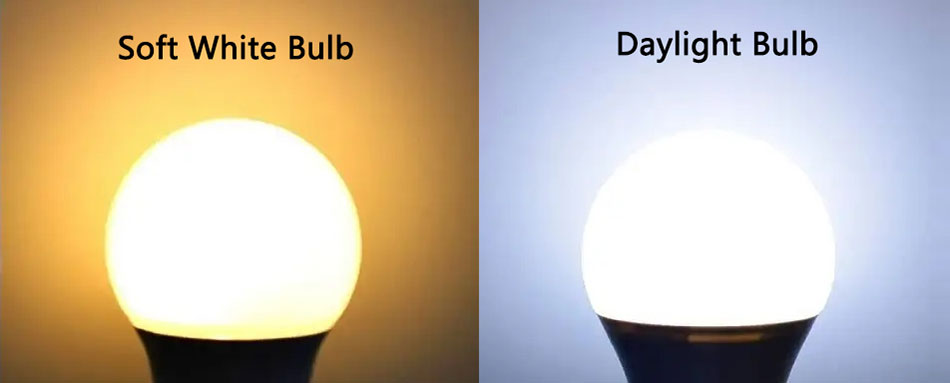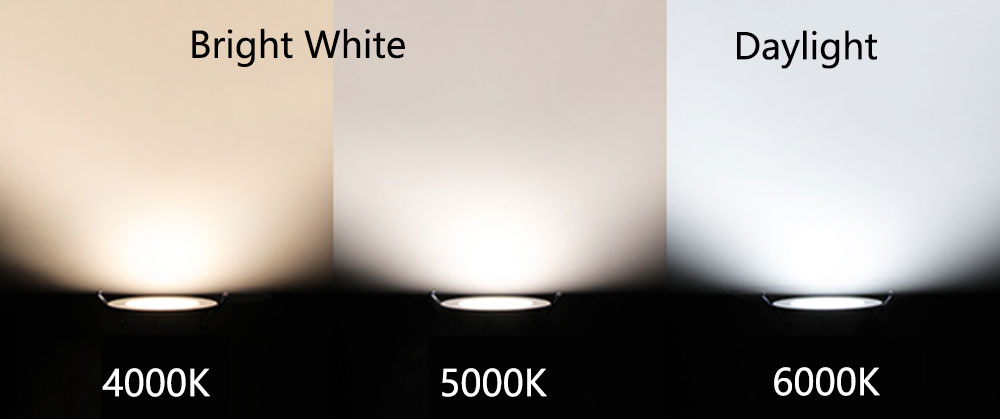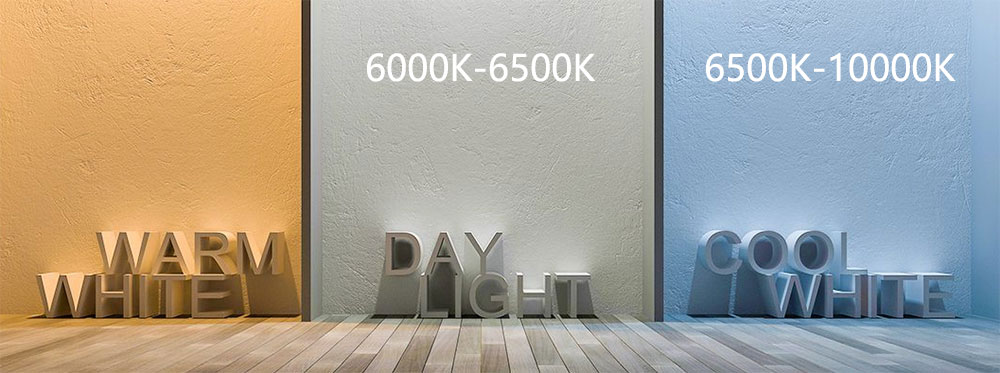In the LED lighting industry, there are many names for white light such as soft white, warm white, daylight, bright white, cool white, neutral white, pure white, etc.
This blog lists a comparison of various white lights to provide you with a reference for choosing a suitable white light bulb or strip light for your room.
We can quickly get simple information by the composition of these words, such as warm white means it has a warm feeling; cool white gives people a cool feeling, and bright white means this light has high brightness.
These words actually reflect on the surface the feeling and mood the light will bring us. Next are some specific comparisons.
Soft White VS Warm White
In fact, soft white and warm white are so similar that they are basically interchangeable. You can also say that soft white is the same as warm white.
The difference between soft white and warm white is very small. We have provided a picture of soft white vs warm white LED bulbs, and there is no difference in the warm and comfortable feeling they give. So feel free to apply warm white and soft white to your living room, bedroom, and other cozy lounge areas.
There is a difference between warm white vs soft white in the specific Kelvin color temperature values. 2700K and 3000K are both soft white and warm white, but there is a difference in their lighting. 2700K light is more yellow, while 3000K light is softer.

Warm White VS Soft White, Which One Is Yellower?
If you have searched for related information on Google, the color temperature range given for warm white and soft white and the difference between them are not uniform.
The more common perception is warm white, with a color temperature range of 2700K-3000K (2700K-3200K) (2700K-3500K), close to the color of traditional light bulbs.
Color temperature of traditional light bulbs:
Tungsten lamp: 2700K-3000K
Halogen bulb: 2700K
Incandescent lamp: 2900K
Candlelight: 1900K
Some people say warm white is yellower than soft white, while others say warm white is whiter than soft white, there are many different opinions.
But a search on Amazon for warm white bulbs and soft white bulbs yielded almost identical results, most of them with a color temperature of 2700K. So it does not matter whether it is warm white or soft white, what matters is its color temperature value.
Soft White VS Daylight
From the above we get a quick message about soft white and daylight: soft white light may be a warm white light, and daylight light is an artificial white light similar to sunlight.
If you agree that soft white is from 2700K to 3500K, then there is a clear difference between soft white and daylight white – i.e., warmth and coolness.
5000K daylight, 6000K daylight, and 6500K daylight are the most common daylight color temperatures in LED lighting. This simulated natural light is designed to match our work and tasks.
Soft White 2700K, on the other hand, clearly presents a yellowish light, a quality that makes soft white lighting ideal for creating a relaxing atmosphere and environment.
Daylight vs soft white depends on whether you want more brightness for task lighting or a warmer ambiance. This difference also applies to daylight white vs warm white. You can learn more about this in our Soft White vs Daylight blog.
Soft White: 2700K-3500K
Daylight: 5000K-6500K

Bright White VS Daylight
Bright white can describe any light with high brightness, it can be 4000K lighting or 5000K lighting.
Usually, we consider the LED color temperature of 4000K-4500K as bright white. Compared to 5000K-6500K daylight, bright white has a lower color temperature and warmer color.
Do daylight LEDs emit blue light? Find out in our 4000K vs 5000K blog.

Cool White VS Daylight
Generally speaking, cool white refers to color temperature lighting above 6500K. 6500K daylight (pure white) is the purest white light color, color temperature value further up, there will be more blue light components. Because it gives people a cold feeling, so also called cool white for cold white.

Cool White VS Warm White
Cool white and warm white are at opposite ends of the Kelvin color temperature spectrum. Warm white light creates a warm and inviting home and business environment, while cool white light is used more for display lighting due to the presence of more blue light.
Due to the similarity of warm white and soft white, warm white vs cool white is the same result as soft white vs cool white.

Soft White VS Bright White
Soft white vs bright white/ Warm white vs bright white is similar to soft white vs daylight, one focuses on warm ambient lighting and one focuses on higher brightness levels. However, some bright white color temperatures can be compatible with these two aspects at the same time such as the 3000K vs 4000K.
Soft white and warm white represents lighting below 3200K color temperature. Slightly higher than it 4000K, 4500K, and 5000K can be well compatible with warm lighting environments and a certain level of brightness.
Cool White VS Bright White
The difference between cool white and bright white lies in the blue light component of the light. Studies have proven that blue light is not suitable for daily use because our eyes are not good at blocking blue light. And blue light can affect our sleep and melatonin secretion.
Therefore, we do not recommend you to use cool white light in the bedroom. However, because of its ultra-high brightness, LED cool white lights are often used for industrial lighting.
Cool White VS Neutral White
Neutral white (natural white) is located in the middle of the color temperature range between warm white and cool white. Compared to 7000K cold white, 4000K natural white is soft and does not burden the eyes, which is perfect for the lighting design of bedrooms, corridors, and living rooms.
This is only an approximate demonstration of color difference, specific color temperature value comparison is needed if you want to more accurately restore the white light color you have in mind.